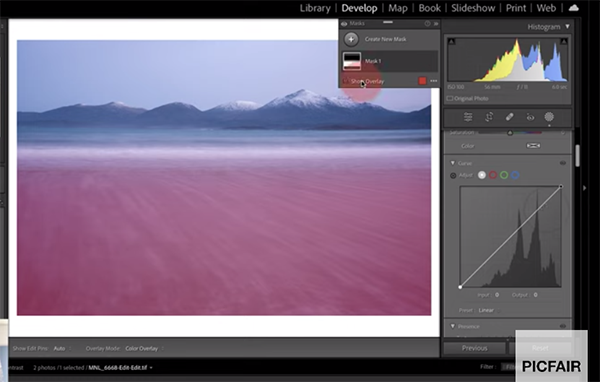Use Midtone Contrast to Pump Up Uninspiring Photos (VIDEO)
This quick post-processing tutorial demonstrates a quick and effective method for adding impact to lackluster landscape images that appear dull and washed out. The technique is particularly effective for rehabilitating high-key photos intended to convey an ethereal effect.
Today’s eight-minute episode come from our friends at the Picfair YouTube channel—a very helpful resource for shooting tips, basic guides and tutorials produced by notable pros. instructor Murry Livingston is a professional b&w photographer and he explains the concept like this: “Adding midtone contrast is a great way to give your images punch and definition while maintaining their light-and-airy feeling.
You’ll learn when this straightforward technique is most powerful and how to get the job done when editing both color and b&w images. Another important consideration is the difference between doing so with global adjustments or selective enhancements that target specific areas within the frame.

The process begins in Lightroom’s develop module and Livingston walks you through the simple steps of adding punch, opening shadows and increasing highlight detail to the color landscape photo you see above. Livingston navigates to the Masking panel and turns his attention to the flat foreground of the long-exposure shot.
A simple Linear Gradient is placed over the lower half of the photo, and you’ll see why Lightroom’s Curves tool, in tandem with the Histogram, is a perfect combination for quickly boosting midtone contrast with precision. It’s a simple matter of manipulating the curve to “darken the shadow portions and lighten the highlight portions in the photo.”
Livingston then moves on to his specialty of b&w and illustrates a different but equally simple process for enhancing midtone contrast when editing monochrome photos. This example clearly illustrates the different results you can expect when using global adjustments as compared to midtone contrast.

If you’re a Shutterbug regular you can probably guess which approach we prefer. The lesson concludes with a discussion of when you can get away with an easy global approach, and when employing masks to add midtone contrast is definitely the best way to go despite the extra steps that are involved.
There are many more shooting and editing instructional videos on the PIcfair YouTube channel, so be sure to take a look.
And don’t miss the earlier tutorial we featured with another accomplished pro who demonstrates why and how composing with “context” in mind is the secret to capturing outdoor photographs with maximum impact and elevating your visual storytelling skills.





